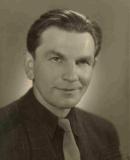
Stan Blum |
This is a special Competition information package.
On Thursday, February 3, 2000 the Immigration Museum in Melbourne held an official opening of an exhibition „TERRA NOVA – A Land of Milk and Honey” organized to celebrate 50 years of Polish immigration and settlement in Australia.
It goes without saying how important this exhibition is to the Polish community in Australia, both for older generation of immigrants, who will find themselves at the exhibition photos, as well as the younger generation and the youngsters, who will have an opportunity to learn more their historical background and find their “roots”.
The exhibition was an amazing opportunity for a special announcement about the establishment of The Blum Foundation. After his death in 1998, a Polish immigrant Stanislaw Blum left a large amount of money to the Polish community in Australia in his will. Here is the excerpt from his will:
"The Blum Foundation" to be dedicated in perpetuity for the promotion and encouragement of education of the Polish language and culture in Australia...My Trustee shall apply the income or any part thereof to or for the benefit of the teaching of the Polish language and culture at the primary, secondary and tertiary levels in Australia (including Sunday Schools, school summer camps and Polish boy scouts organisations and at any other places at which Poles in Australia attend for the purpose of being educated in the Polish language and culture...
MY TRUSTEE …shall act upon the advice of the Sister Superior of the "Sisters of the Resurrection" at Essendon...and the Federal Council of Polish Associations in Australia or any Bodies representing or succeeding them."
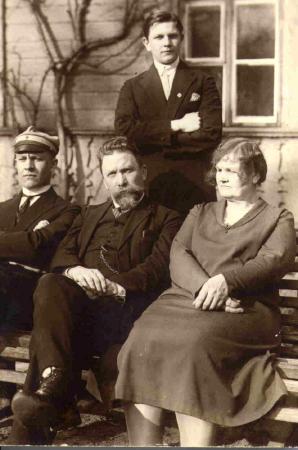
Stan with his brother & parents |
The Blum Foundation is devoted to the promotion and teaching of Polish language and culture in Australia. It aims to support Polish language and culture classes in primary and secondary schools, as well as universities in Australia (including the Saturday school, summer and scout camps and all the other organizations which enable Poles to promote their education, culture and language).
Who was Stanislaw Blum? What made him such a generous man? Intrigued by this figure I decided to investigate the paperwork left by Blum, and preserved by his caring friend, Ms Genowefa Kuester. Letters, cards, certificates and photos give evidence of an extraordinary life. It is the life of a modest, noble and very lonely man; the life which is typical for his peers, and is depicted at the exhibition.
Stanisław Blum was born in Russia in 1909 in a Polish Catholic family. From 1922 till 1930 he was studying at Swieciany high school in the Vilnus region and after its completion he moved to the military academy in Wlodzimierz. Between 1932 and 1939 he was studying at the Warsaw Polytechnic Academy where he obtained a degree in civil engineering.
After a few months in August 1939 he was drafted to the army and served as a reconnaissance officer and soon after was taken prisoner-of-war by the Germans. Until 1945 he remained in POW camps in Germany, where in the Peltz camp in Lubeka he witnessed the end of the WWII. Blum joined US military in Germany as a civil engineer and worked with constructing roads. It was then that he stared the immigration proceedings with the Australian Government. After being released from the army, Blum arrived in Australia in September 1949.
At first he was committed to a two-year contract as an OHS officer in the shipyards in Whyalla, South Australia. Having completed “Mechanical Drawing Grade I” course in 1951, he started working as a draftsman at State Rivers&Water systems in Eildon.
After 3 years he moved to Cooma in NSW to work at the Snowy M.H.E.A. With his Polish engineering qualifications recognized in 1958, Blum was employed as an engineer and became a member of the Association of Professional Engineers in NSW. For the next 20 years he worked and lived alone in a hostel in Cooma. He retired at the age of 65 and was living in Boronia in Melbourne, Victoria till his death, on the 12th of April, 1998. He was buried at Heidelberg Cemetery in Melbourne.
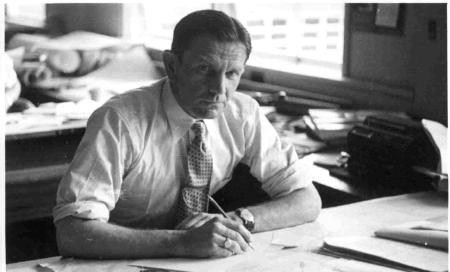
Life in Cooma after work: plenty of writing & reading |
It is just a biography – dry facts and dates which do not give an account of a man. It is the life story typical of his generation. It is the story of young Polish officers, who were fighting for their free homeland to face a bitter disappointment at the end of the war.
Blum’s life goes to show the life of many young male immigrants, who never set up a family and lived very humble and quiet existence, merely watching those around them. Stanislaw Blum loved his work, and was very active within the Polish community. He had a rich social life and a group of very close friends, but even they did not know much about his private life.
One of his friends from Poland once wrote: “I have to admit that you are very vague in your accounts –it has always been your rule. As far as I remember you never liked revealing what you feel, be it sadness or joy.”
As the co-founder and first President of the Polish Technical Club, Stanislaw Blum was a well known and popular figure in Melbourne. He was very interested in the arts, attended exhibitions and was well-read. Apart from his beloved books he held material possessions in complete disregard. His apartment was filled with old and shabby furniture and his only car, Holden from 1958, served him for four decades till his death. Some people disliked his modest appearance and lifestyle, but few knew his secret – an incredible benevolence.
On opening the folder with all the documents I found hundreds of certificates and notes from non-governmental organizations from all over the world, words of gratitude from groups, individuals, families, his brother and friends in Poland. He constantly kept sending the food and clothing parcels to them. 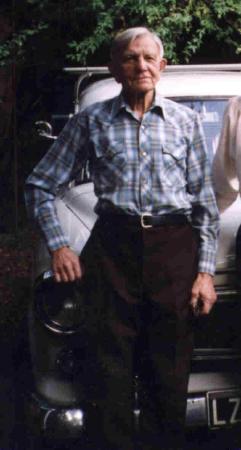
Mr Blum in front of his old holden |
He always tried to please someone, remember about seasonal greetings and his aged friends in Poland who were destitute. Seemingly lonely, Blum was always surrounded by the gratitude for his persistence and caring. His life became complete by helping others. His benevolence was the main substance of his existence.
Mr Blum was a long-term donor to many NGOs and charities, such as the Red Cross, Flying Doctors, Greenpeace, the Salvation Army or National Geographic Society, just to name a few. He was supporting financially various disadvantaged groups: the deaf-mute, the blind, the spastics, and people suffering from heart condition, MS and poor children in Africa. He supported various projects and initiatives: such as construction of the Church and old people’s house in Marayong, The Foundation for the Polish Armed Forces in Exile, The Association of Poles in the East in Melbourne, Publishing House in London, The Chapel of the 3rd Station of the Cross in Jerusalem, The Association of Catholic Families, The Distribution of the Press and Publishers in Poland, The Association of Guide Dogs, RSPCA...The list seems endless.
I should also mention that Blum was awarded a certificate of the Central Committee for the Polish Community Foundation and became a lifelong member of the Foundation for the Polish Studies at the Macquarie University and the Patron for Independent Polish Science and Culture.
I’m impressed by the overwhelming activity of this straightforward and noble man, who according to one of his friends: “liked to give away, because it made him happy”. After his visit to Poland in 1961 Blum said: “I do not seek much”, but he managed to find an astounding level of emotional relationship with the others. His benevolence was his refuge.
Thanks to the generosity of Mr Blum the exhibition will be available across Australia. One of the exhibits is a black wooden chest engraved with white letters STANISLAW BLUM. This plain chest symbolizes Blum’s noble, hardworking and modest life. It reminds about a man who always remembered about others, but did not arrange for his own place of burial. However, Polish community will always remain grateful for his deeds.
By Halina Jarecka
Translated by Magdalena Kopydłowska
From Blum Foundation website
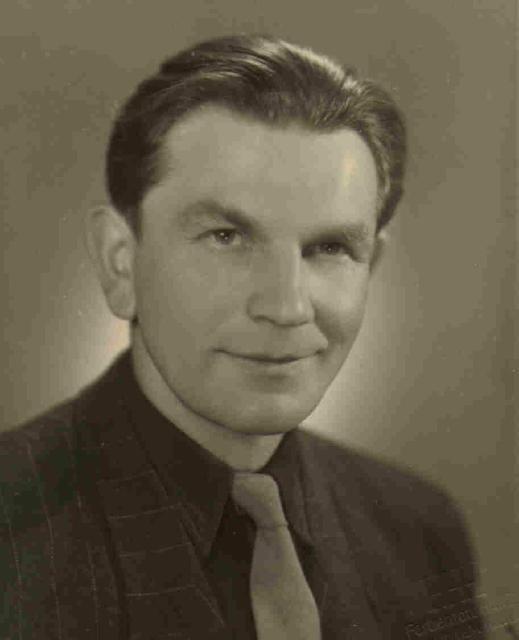
All photos from Blum Foundation website |
| 

